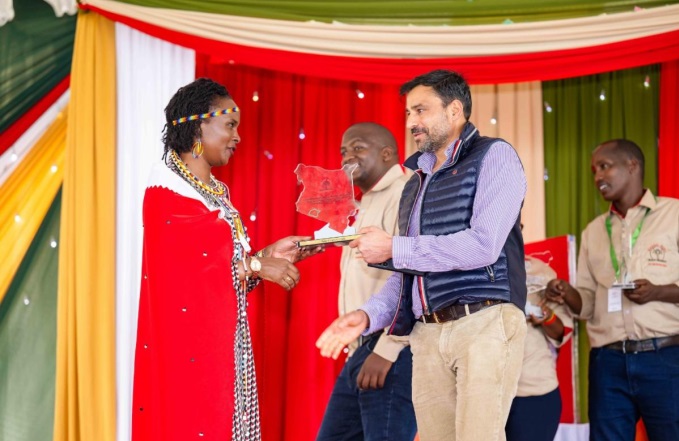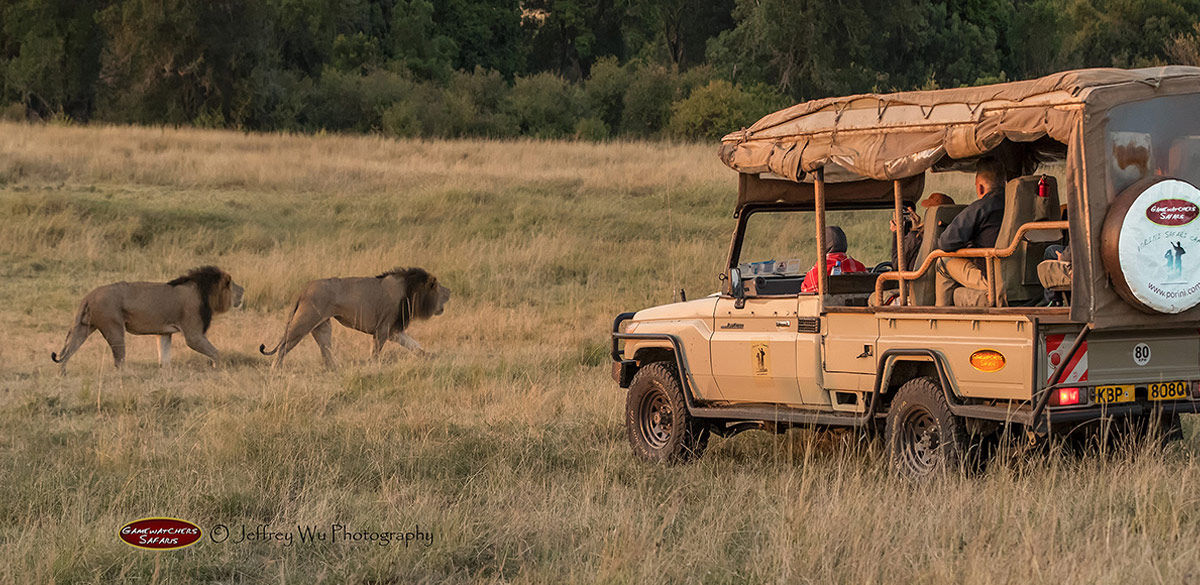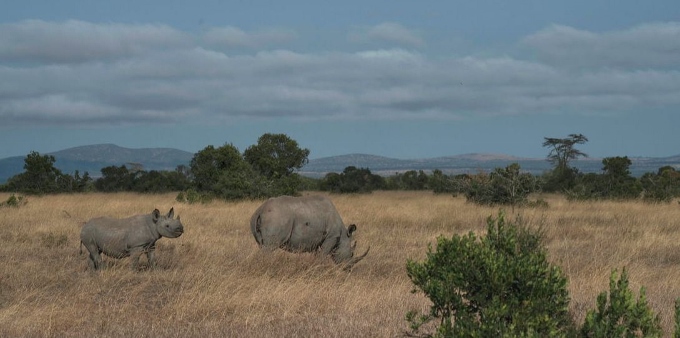
It’s Clinton’s last day at Porini Rhino Camp and despite a sudden change in the weather there is still plenty to see …
* * * * * * * * * * * * * * * * * * * * * * * *
This series of blogs will take you on Clinton’s safari in Kenya as he travels from Atlanta (USA) to Nairobi National Park, Selenkay Conservancy (Amboseli), Ol Pejeta Conservancy (Laikipia) and Olare Motorogi Conservancy (Maasai Mara). Let’s join him on his journey as he shares his insights into the conservancies, Porini Camps and the people (and animals!) that he meets along the way. All images are from Clinton’s TrekPic.com photo site. Blog entries are from his Venture Moola blog at ReadJanus.com.
* * * * * * * * * * * * * * * * * * * * * * * *
Reports of an extended drought in Kenya made me hesitant about scheduling our trip. You have to do it well in advance, almost 12 months, and at the time we made reservations parts of Kenya had been in drought for years.
I could never tell, however, whether the areas we would be traveling to had suffered from the drought. I was not familiar enough with our destinations to match them to the online drought reports I was seeing. In the end, I deferred to the advice of our outfitter.
Our leap of faith was rewarded with a wet spring and summer in Kenya and an abundance of game when we arrived. All during our trip, we were reminded of this rain by the tall grasses and the large number of young and pregnant animals. Among the zebra, it seemed like every third animal was heavy with child or being followed by one.
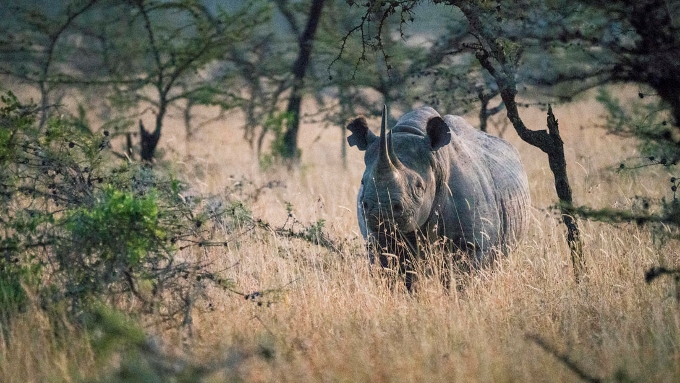
Close to Rhino Camp
We, of course, were traveling during the dry Fall season. Years of hearing about steaming jungles and hot equatorial regions had me anticipating heat and lots of it. As it turned out, preconceptions were wrong. The climate was much more temperate than I expected. We were not in sweltering jungles but, instead, cooler at high altitude in grasslands.
Our equatorial African weather was what you would expect if you moved the wildlife to Denver for the summer. Cool mornings and evenings with moderate temperatures in the afternoon. I had been told this by a friend before we left but, still, it was a surprise.
Our experience with clear skies, however, changed abruptly on our second day at Rhino Camp. Clouds gathered during our morning game drive and then, just before our scheduled afternoon drive, the skies dropped buckets of rain throughout the savanna.
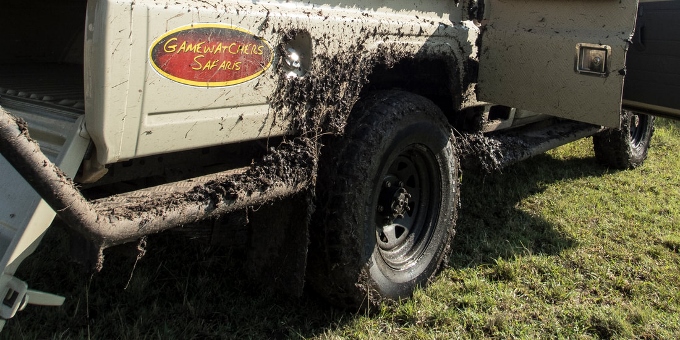
Clean at the start but muddy by breakfast
For the next few days, here and at the Lion Camp, rains would come each evening raising creek levels and making the roads wet and slick with mud. To our Maasai drivers and spotters this presented no problems. Drives went on as usual even when the roads got messy.
On our last day at Rhino Camp, the rain and a heavy wind hit just as we were starting our afternoon drive. We all loaded ourselves quickly into the vehicle and began rolling down the canvas side protectors with their vinyl ‘glass’ windows. Our guides worked frantically to secure these panels from the outside until the passenger compartment was mostly dry.
Our driver started the engine and began driving up the slick road. Wet cross winds whipped at the vehicle as we made slow progress. Visibility was low and our now spotter was struggling with front side panel. The rains were drenching the front compartment. No complaint from the spotter but the other guests and we elected to suspend the drive and return to camp.
It was a good decision. Even though the skies cleared about 20 minutes later (which meant our sister vehicle was having a successful drive), we were treated to a cool afternoon around a campfire overlooking a busy waterhole.
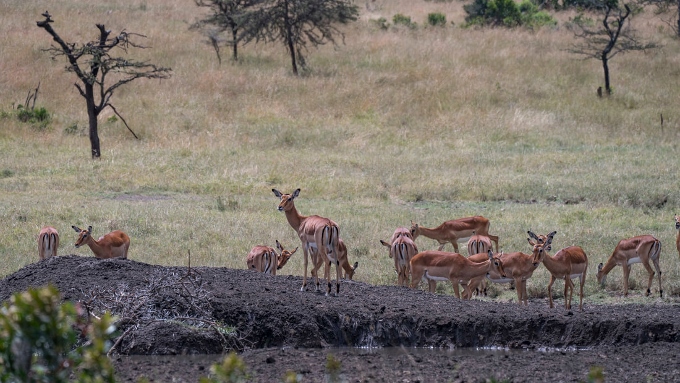
Gazelles at the Camp Waterhole
While we sat and exchanged stories, a small herd of grant’s gazelles came and took their refreshment. And awhile later, a dozen or so baboons arrived and ran off the gazelles to have the space to themselves. Then a troop of vervet monkeys started moving between trees next to the waterhole. The one below was returning to a high spot to keep an eye on the baboons.
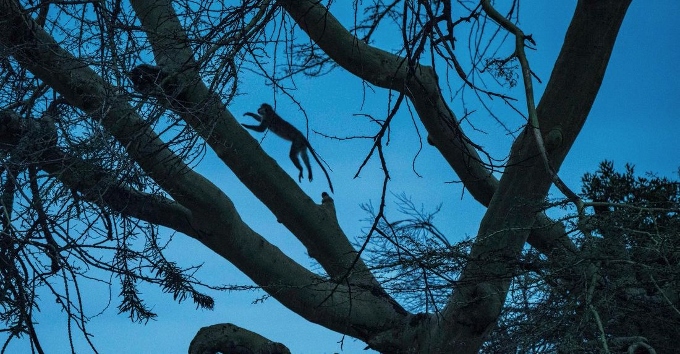
Vervet Monkey
When it got dark, we could not see what was happening across the stream that separated us from the waterhole. With an overcast sky far removed from city lights, it was very dark except for the flames from the fire and muted lights in the nearby dining tent.
Just because we could not see the waterhole did not mean it was abandoned. Notwithstanding our conversation, we could hear movement and the occasional grunt across the stream. When a staff member arrived with a strong flashlight we were treated to this sight across the stream.
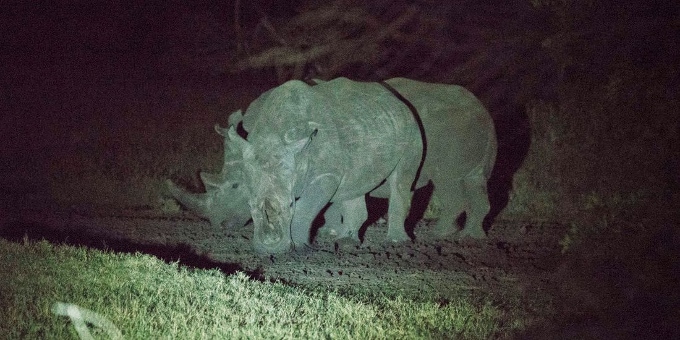
Night Rhino
Not bad for an afternoon off. Those in the other vehicle who continued in the rain returned with stories of great sightings but none of us felt deprived. The conversation around the fire and the chance to see rhino from ground level just across the stream made it another great evening.
The next morning we would be up early to catch a bush plane to Porini Lion camp in the Maasai Mara region. The rains that had not interfered with our game viewing had washed out the grass runway next to the camp so our journey the next morning would take us by safari vehicle through the conservancy, across rural Kenya, through a wildlife club and to a private airstrip in Nanyuki. More about that in the next blog.
First published 3 Jan 2019. All photos and text are © Clinton Richardson. All images are from his galleries at TrekPic.com
About Clinton Richardson
Clinton Richardson has been writing and taking photographs for decades. His books include the critically acclaimed 5th edition Richardson’s Growth Company Guide 5.0 and the award-winning book about social media and ancient coins called Ancient Selfies. His images, including images taken on his trip, can be viewed at TrekPic.com. His Venture Moola blog can be viewed at Readjanus.com.
See Other Blogs in this Series:
- Safari Countdown: Prepping for Kenya
- Safari 1: The Hunt
- Safari 2: Off to Nairobi
- Safari 3: Tented Camps & Conservancies
- Safari 4: Passports in His Underpants
- Safari 5: Night Lions to Amboseli
- Safari 6: Amboseli to Selenkay
- Safari 7: Pooh on You
- Safari 8: Eaten by a Lion?
- Safari 9: The Maasai
- Safari 10: On the Move
- Safari 11: Crash on the Grass
- Safari 12: Sundowner Surprise
- Safari 13: Stalag Panzee
- Safari 14: Bump in the Night
- Safari 16: How Many Wives Would You Like to Have?
- Safari 17: Distracting His Highness
- Safari 18: How to Eat a Tree
- Safari 19: Hunting with Children (well, cubs!)
- Safari 20: Blue Jean Symphony
- Safari 21: African Nights
on Thursday 03rd January 2019 at 12:01



